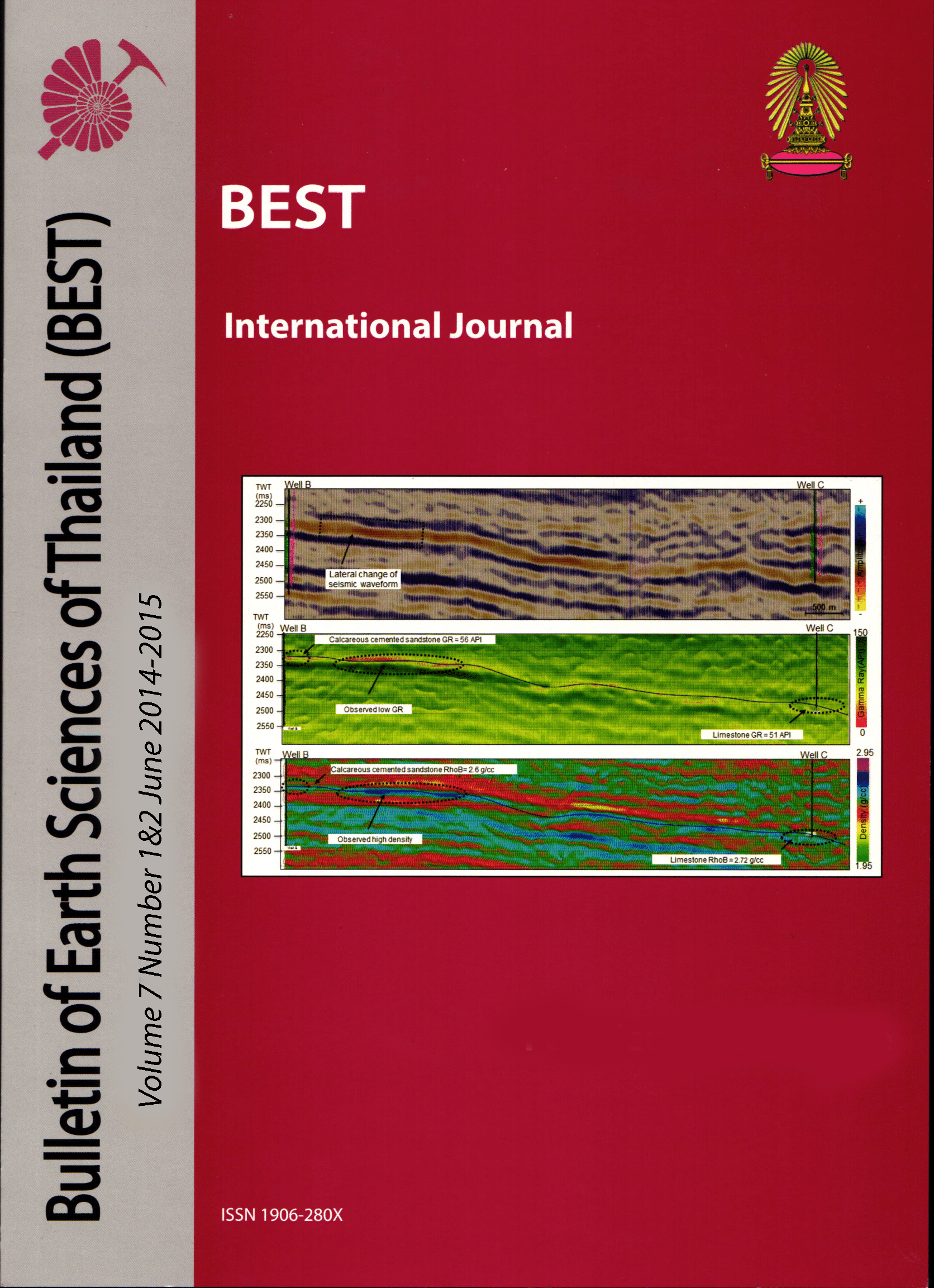CHARACTERIZATION OF A CARBONATE CEMENTED, MIOCENE RESERVOIR, OFFSHORE VIETNAM.
Main Article Content
Abstract
Reservoir quality in sandstones of SE Asia can be strongly influenced by variable levels of carbonate cement in intergranular pores spaces. The distribution of these cements is typically not homogenous. Lower and Middle Miocene texturally-immature tidally-influenced sands, now lie at depths of 2000-3500 m in the offshore North Vietnam. These sediments occur in a tectonic regime of initial extension and escape of compactional waters, followed by a regime of compression and inversion. Sands recovered in cores show numerous intervals of local to pervasive carbonate cementation, which creates an homogenous poroperm distributions. Within a tidal channel and tidal mudflat sediment-host, detailed analysis using a combination of conventional core study, wireline and petrographic techniques broadly defines these cemented intervals, but cannot satisfactorily explain the source of carbonate cement. Wireline analysis, without comparison to equivalent core, does not reliably define zones of cement occurrence.
This study uses a novel application of stable isotopes (carbon and oxygen) in an attempt to better define the origin of the fluids that precipitated the cements, using a cored set of Lower Miocene sands. The resulting C-O cross plot defines two groupings; Group 1 cements occur in mostly in mud-dominated units and show a set of relatively less-negative carbon and oxygen values (0‰ to -3‰ and -5‰ to -12‰, respectively). Group 2 cements, occur in sand units and have a relatively more negative range of carbon and oxygen values (-5‰ to -9 ‰ and -11‰ to -15‰). Group 1 cements are interpreted as derived locally via compactional water cross flows. Group 2 are interpreted as forming in sandstone aquifers that were the foci for the escape of warmer, likely more-basinal, waters. The escape of these waters may be related to the compressional stage in the strike-slip basin that hosts these sands.
Article Details

This work is licensed under a Creative Commons Attribution-NonCommercial-NoDerivatives 4.0 International License.
Copyright © 2008 Department of Geology, Faculty of Science, Chulalongkorn University. Parts of an article can be photocopied or reproduced without prior written permission from the author(s), but due acknowledgments should be stated or cited accordingly.
References
Allegre, C. J., 2008, Isotope Geology: Cambridge University Press.
Anderson, T. E, and M. A. Arthur, 1983, Stable isotopes of oxygen and carbon and their application to sedimentologic and paleoenvironmental problems, SEPM Short Course 10, p. 1-151.
Craig, H., 1957, Isotopic standards for carbon and oxygen and correction factors for mass-spectrometric analysis of carbon dioxide: Geochimicaet Cosmochimica Acta, v. 12, p. 133-149.
Gong, Z.-s., S. Li, T. Xie, Q. Zhang, and S. Xu, 1997, Continental margin basin analysis and hydrocarbon accumulation of the northern South China Sea: China Sci. Press, Beijing, 510pp (in Chinese).
Guo, Z. Z., L. Wang, Y. Shi, H. Li, S. Liu, 2001, Regional tectonic evolution around Yinggehai basin of South China Sea: Geological Journal of China Universities, v. 7, p. 1–12.
Hudson, J. D. 1977. Stable isotopes and limestone lithification. Journal Geological Society London 133, 637-660.
Li, S., C. Lin, and Q. Zhang, 1998, Episodic rifting and its dynamical process in north continental margin of South China Sea, and the tectonic event from 10 Ma: Chinese Science Bulletin, v. 8, p. 797-810.
Longstaffe, F., 1983, Diagenesis 4. Stable isotope studies of diagenesis in clastic rocks: Geoscience Canada, v. 10.
Morad, S., and M. Eshete, 1990, Petrology, chemistry and diagenesis of calcite concretions in Silurian shales from central Sweden: Sedimentary Geology, v. 66, p. 113-134.
Mozley, P. S., 1996, The internal structure of carbonate concretions in mudrocks: a critical evaluation of the conventional concentric model of concretion growth: Sedimentary Geology, v. 103, p. 85-91.
Prosser, D.J., Daws, J.A., Fallick, A.E., and Williams, B.P.J., 1993, Geochemistry and Diagenesis of Stratabound calcite cement layers within the Rannoch Formation of the Brent-Group, Murchison Field, North Viking Graben (Northern North –Sea): Sedimentary Geology, v.87, p. 139-164.


